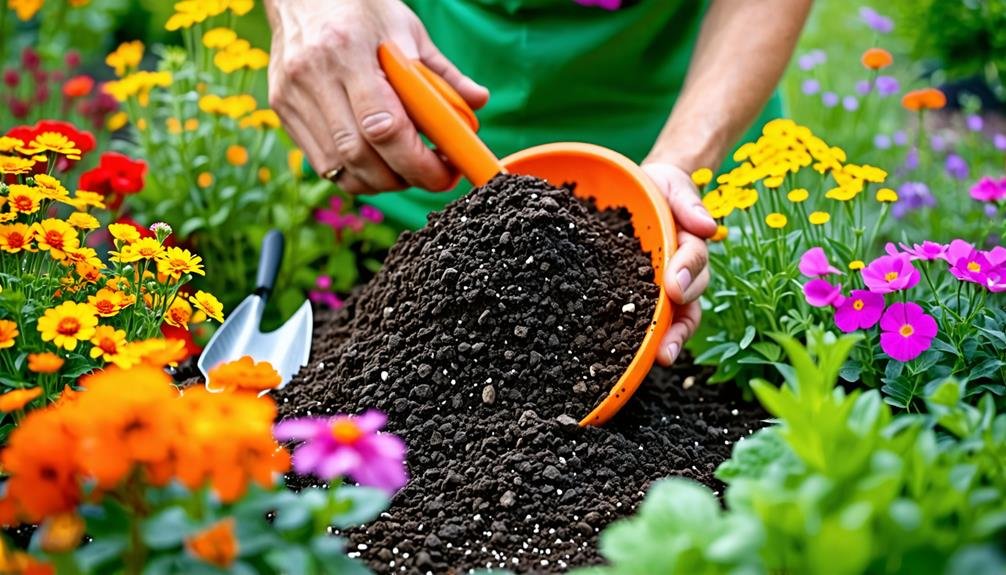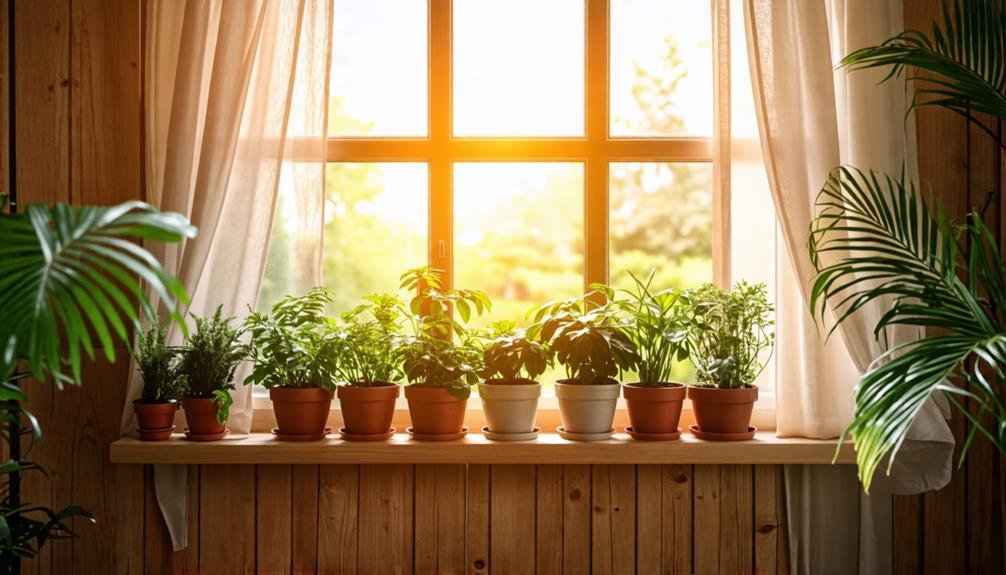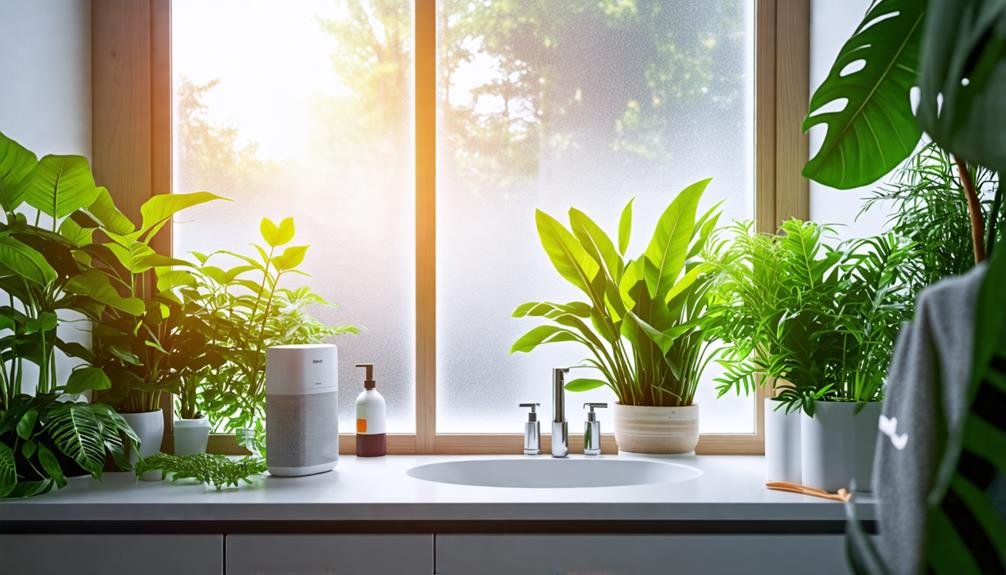Reusing planting soil is a smart strategy to cut down on gardening expenses while also promoting environmental sustainability. However, it's important to address potential issues like nutrient depletion and harmful microorganisms that may thrive in used soil. One effective method for preparing soil for reuse is solarization, where the soil is spread thinly on a tarp to expose it to sunlight's heat, effectively sterilizing it. After this process, enrich the soil with compost or balanced fertilizers to restore necessary nutrients. This practice not only saves money but also improves your gardening skills, as you investigate different methods for best soil health.
Understanding Used Potting Soil
Used potting soil can pose challenges for home gardeners, as it may contain harmful microorganisms and lack essential minerals crucial for the vigorous growth of new plants. While the environmentally-friendly practice of reusing potting substrate can help reduce gardening expenses, it's important to recognize the potential hazards involved. Microorganisms such as fungi and bacteria can flourish in recycled soil, leading to diseases that may threaten your new plants' vitality.
To minimize these risks, an effective technique is solarization, a popular gardening method showcased on platforms like TikTok that harnesses sunlight's heat to sterilize the soil. This procedure involves spreading the used substrate evenly on a tarp, allowing the sun's warmth to eradicate harmful pests and pathogens. However, gardeners should exercise caution, as solarization can also strip vital minerals from the soil, potentially affecting plant growth.
Nutrient Depletion in Reused Soil
Reusing potting mix can lead to nutrient loss, as essential elements like nitrogen, potassium, and phosphorus may be significantly diminished after previous plant cultivation. When plants grow in containers, they often consume large quantities of these vital nutrients, resulting in depleted soil for future use. This lack of nutrients can impede the growth and health of new plants, which depend on these elements for processes such as photosynthesis and root growth.
Moreover, the quick leaching of nutrients in container gardening worsens this problem, especially if the soil has been reused multiple times without any supplementation. Therefore, gardeners may discover that their recycled soil is insufficient for sustaining healthy plant life unless appropriate measures are implemented.
To address nutrient loss, it is recommended to enhance the reused soil with organic supplements, such as homemade compost or balanced fertilizers like Miracle-Gro. These additions not only restore lost nutrients but also improve soil structure and water retention. By recognizing the effects of nutrient depletion in reused potting mix, gardeners can make informed choices that encourage the growth of robust, thriving plants with assurance.
Preparing Soil for Reuse

Preparing soil for reuse is essential for promoting healthy plant growth. It is important to address potential problems like pathogens and nutrient loss before reusing potting soil. One effective technique for sterilizing soil is solarization. This method uses sunlight to heat the soil, killing off harmful pests and diseases. For optimal results, spread the soil in a thin layer on a tarp to ensure uniform heating.
However, be aware that solarization can strip the soil of vital nutrients, which may hinder plant development. After the sterilization process, boost the soil's nutrient levels by adding compost or fertilizers. Products like Miracle-Gro can effectively replenish nutrients. Additionally, incorporating organic matter, such as peat moss or well-rotted manure, can improve soil structure and moisture retention, creating a more favorable environment for future plants.
Advantages of Reusing Soil
One major advantage of reusing potting soil is the substantial savings it provides to home gardeners. By choosing to repurpose soil, individuals can sidestep the ongoing costs associated with purchasing brands like Miracle-Gro or FoxFarm, allowing them to allocate funds toward other gardening projects.
Additionally, reusing soil has a positive impact on the environment by reducing waste. Each year, numerous bags of soil from various companies fill landfills; by recycling what they already have, gardeners can lessen their ecological impact.
When enhanced correctly, reused soil can maintain or even enhance its quality. Incorporating organic materials, such as compost from brands like Black Kow, can restore essential nutrients that may have been depleted during the growth of previous plants. This not only improves soil structure but also supports healthier plant growth.
Furthermore, reusing potting soil strengthens the connection between gardeners and their gardening practices. It encourages individuals to engage with the soil more closely, gaining insight into its composition and nutritional requirements. This proactive approach empowers gardeners to cultivate vibrant plants while embracing resourcefulness and sustainability, leading to a more rewarding gardening journey.
Expert Tips for Soil Reuse

Consulting gardening experts can provide helpful insights and techniques for effectively reusing potting mix. One essential method is solarization, a natural technique that utilizes the sun's warmth to sterilize soil, removing harmful microbes and insects. To apply this method, spread the used potting mix thinly on a tarp, allowing sunlight to warm it sufficiently. However, it is important to remember that solarization may reduce vital nutrients needed for plant development, so incorporating brands like Espoma Organic Compost or Black Gold Organic Fertilizer is recommended.
Adding homemade compost not only increases nutrient content but also improves soil texture, promoting healthier plant growth. It is advisable to blend compost thoroughly with the used potting mix before planting. Additionally, experts suggest testing the soil's pH and nutrient levels, ensuring a balanced environment for new plants.



















You must be logged in to post a comment Login